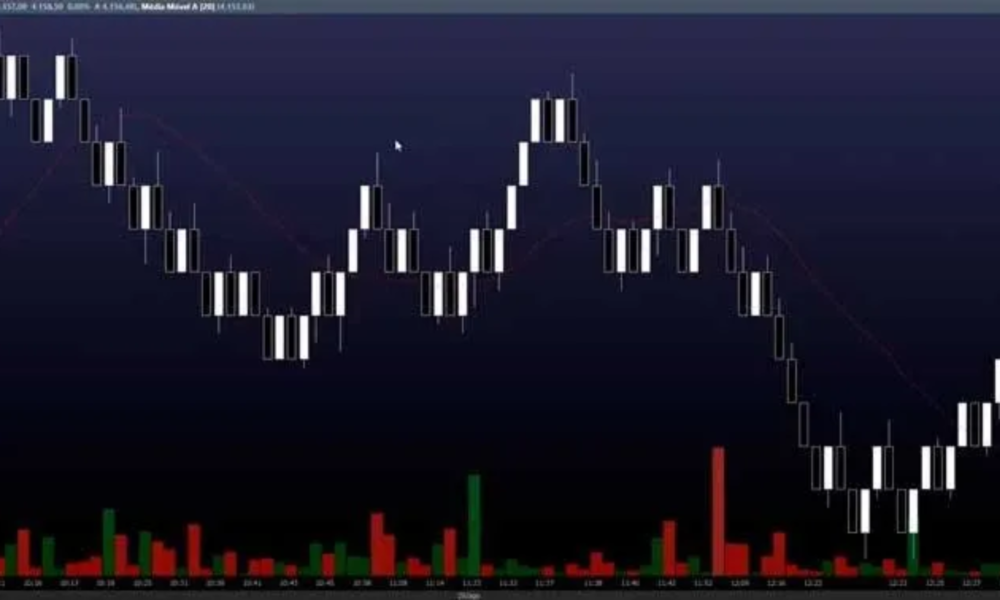In the fast-paced world of cryptocurrency trading, automated trading bots have emerged as powerful tools to maximize profits while minimizing human effort. With the right configuration and strategy, these bots can help traders execute trades 24/7, taking advantage of market fluctuations in real-time. In this guide, we will explore what trading bots are, how they work, how to set them up for cryptocurrency trading, and advanced strategies like arbitrage trading and trend following to optimize retuns.
What Are Trading Bots and How Do They Work?
A trading bot is an automated software program that interacts with financial exchanges to execute trades based on predefined rules. These bots analyze market data, detect trading opportunities, and place buy or sell orders without requiring manual intervention.
Key Functions of a Trading Bot:
- Market Analysis: Bots scan market trends, price movements, and technical indicators in real time, helping to identify profitable patterns that humans might miss.
- Trade Execution: Based on preset rules, bots place buy and sell orders, ensuring swift action that minimizes the impact of sudden market changes.
- Risk Management: Many bots include stop-loss and take-profit mechanisms to limit potential losses, adjusting the strategy based on market conditions to protect capital.
- 24/7 Trading: Unlike human traders, bots operate continuously, capitalizing on opportunities at all hours, ensuring that no profitable trade is missed even when the trader is unavailable.
Types of Trading Bots:
- Market-Making Bots: These bots continuously place buy and sell orders to earn from bid-ask spreads, providing liquidity to the market and reducing volatility.
- Arbitrage Bots: They identify price differences across multiple exchanges to profit from small discrepancies, exploiting inefficiencies in the market to generate consistent returns.
- Trend-Following Bots: These bots follow market trends and execute trades based on moving averages, RSI, and MACD, adjusting strategies as market conditions change to maximize profits.
- Grid Trading Bots: They place multiple buy and sell orders at different price levels to profit from market volatility, creating a grid-like pattern of orders that capitalize on fluctuations in price.
How to Set Up a Trading Bot for Cryptocurrency Trading
Setting up a trading bot requires choosing the right platform, configuring trading strategies, and monitoring performance. Here’s a step-by-step guide:
1. Choose a Reliable Trading Bot Platform
Some of the most popular crypto trading bot platforms include:
3Commas: Supports multiple exchanges and offers automated strategies, enabling users to execute trades across different platforms seamlessly.
Cryptohopper: Provides AI-driven trading and backtesting tools, allowing traders to optimize strategies based on historical data for better performance.
Pionex: Offers built-in grid trading bots with low fees, providing an accessible option for beginners to automate trading strategies without high costs.
Bitsgap: Specializes in arbitrage and grid trading automation, helping traders to take advantage of price differences across exchanges for potential profit.
2. Connect the Bot to a Cryptocurrency Exchange
To function properly, bots need access to your exchange account via API keys. Follow these steps:
- Choose a reputable exchange like Binance, Coinbase Pro, Kraken, or KuCoin. Make sure the exchange offers robust security measures, such as two-factor authentication (2FA), to protect your account.
- Generate API keys in the exchange’s settings. When generating the keys, select the appropriate permissions for trading, withdrawing, and viewing data, ensuring they match your bot’s requirements.
- Connect the API keys to the trading bot platform. Enter the generated keys into the bot’s configuration interface, making sure they are correctly linked and securely stored to prevent unauthorized access.
3. Configure Trading Strategies
Traders can either create custom strategies or use pre-built ones offered by the bot. Popular strategies include:
Dollar-Cost Averaging (DCA): Automatically buys assets at regular intervals to minimize market volatility impact, ensuring that traders accumulate assets consistently without trying to time the market.
Momentum Trading: Trades based on price momentum and technical indicators, aiming to capitalize on trends by entering positions during strong price movements.
Scalping: Makes multiple small trades to take advantage of tiny price fluctuations, often leveraging high-frequency trading techniques for short-term gains.
4. Set Risk Management Rules
- Stop-Loss Orders: Limits losses by automatically selling when the price drops to a certain level, helping to prevent further financial damage in volatile markets.
- Take-Profit Orders: Ensures profits by closing positions once a target price is reached, locking in gains before the market reverses.
- Trailing Stop: Adjusts stop-loss levels as prices move favorably, allowing you to capture more profit if the trend continues in your favor.
5. Monitor and Optimize Performance
Even though bots are automated, regular monitoring ensures optimal performance. Use trading dashboards and analytics to fine-tune strategies based on market trends. Periodically assess your bot’s efficiency to identify any areas for improvement, ensuring it adapts to evolving market conditions.
This continuous evaluation helps in identifying performance gaps, ensuring that the bot maximizes its potential while minimizing risks.
Advanced Automation Strategies for Crypto Trading
Once traders are familiar with basic trading bots, they can implement advanced automation strategies to increase profitability. These strategies often involve the use of more complex algorithms that can analyze market trends in real time and execute trades faster than human traders ever could. Additionally, advanced bots can be customized to respond to various market conditions, such as volatility spikes or sudden price movements, to maximize gains and minimize losses.
1. Arbitrage Trading
Arbitrage bots exploit price differences across multiple exchanges. Since crypto markets are decentralized, prices may vary slightly between platforms. An arbitrage bot scans different exchanges and buys low on one while selling high on another.
Types of Arbitrage:
- Triangular Arbitrage: Exploits price inefficiencies between three different trading pairs, allowing traders to take advantage of discrepancies in currency exchange rates. This method typically involves converting one currency into another, then into a third currency, and finally back into the original one to make a profit.
- Spatial Arbitrage: Trades the same asset across multiple exchanges, capitalizing on the price differences for the same asset listed at different platforms. It requires quick execution and access to multiple markets to effectively take advantage of price disparities in real-time.
- Statistical Arbitrage: Uses quantitative models to predict price deviations, relying on historical data and statistical analysis to identify patterns and opportunities. This strategy often involves high-frequency trading and sophisticated algorithms to make rapid trades based on predictive signals.
2. Trend Following Strategy
Trend-following bots analyze moving averages (MA), exponential moving averages (EMA), and Relative Strength Index (RSI) to determine market trends. This strategy involves:
- Entering a trade when the price breaks above a moving average, indicating a potential upward trend with increased market momentum.
- Exiting a trade when the trend starts reversing, typically confirmed by a cross of the price below the moving average, signaling the end of the bullish phase.
3. Mean Reversion Trading
This strategy assumes that prices tend to return to an average level after extreme movements, following the principle that markets are cyclical and revert to their mean over time. Bots identify overbought or oversold conditions using Bollinger Bands and RSI, which provide visual cues of market volatility, to execute profitable trades. By detecting when assets move beyond typical price ranges, bots aim to capture short-term price corrections for a higher probability of success.
4. Machine Learning-Based Trading Bots
Some traders use AI-driven bots that adapt to market conditions using machine learning algorithms. These bots analyze historical price data and optimize strategies dynamically. They continuously learn from new data and adjust their trading strategies in real-time to maximize profit potential while minimizing risk exposure.
Benefits and risks of automated trading in trading
Benefits:
✔ Emotion-Free Trading – Eliminates impulsive decisions.
✔ Speed and Efficiency – Executes trades faster than humans.
✔ Backtesting – Simulates strategies before deploying real capital.
✔ Scalability – Can manage multiple assets and strategies simultaneously.
Risks:
⚠ Technical Failures – Bugs or API issues may cause malfunctions.
⚠ Market Volatility – Sudden price swings can lead to unexpected losses.
⚠ Security Risks – API keys must be protected to avoid hacking.
⚠ Over-Optimization – Backtested strategies may not always work in live markets.
Is Automated Trading Right for You?
Using crypto trading bots can be a game-changer for both beginner and advanced traders. By automating repetitive tasks, bots help maximize profits and reduce emotional trading errors. However, choosing the right bot, setting up effective strategies, and monitoring performance are crucial to achieving long-term success.
If you’re interested in automated trading, start with a trusted trading bot platform, backtest your strategies, and gradually scale your investments. With the right approach, automated trading can be a powerful tool for maximizing profits in the cryptocurrency market.
Is it worth using an Automated Trading System? FIND OUT HERE
Automated Trading Frequently Asked Questions (FAQs)
1. Are trading bots legal? Yes, trading bots are legal as long as they comply with exchange policies and financial regulations.
2. Can I make money using trading bots? Yes, but profits depend on market conditions, strategies, and proper risk management.
3. Do I need coding skills to use a trading bot? No, most modern trading bots offer user-friendly interfaces that require no programming knowledge.
4. What is the best trading bot for beginners? Platforms like 3Commas, Pionex, and Cryptohopper offer beginner-friendly automated trading solutions.
5. How much capital do I need to start? It depends on your strategy, but many bots allow users to start with as little as $50 to $100.
By implementing automated trading strategies, crypto traders can efficiently maximize profits while minimizing risks. Ready to start? Choose a trading bot and start automating your trades today!



